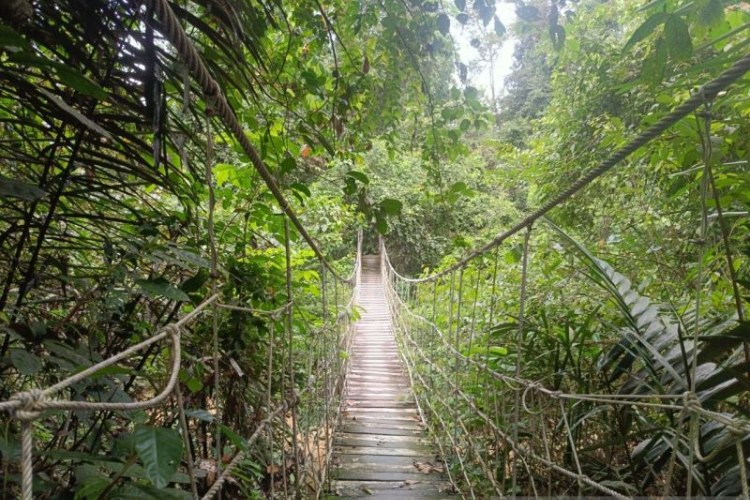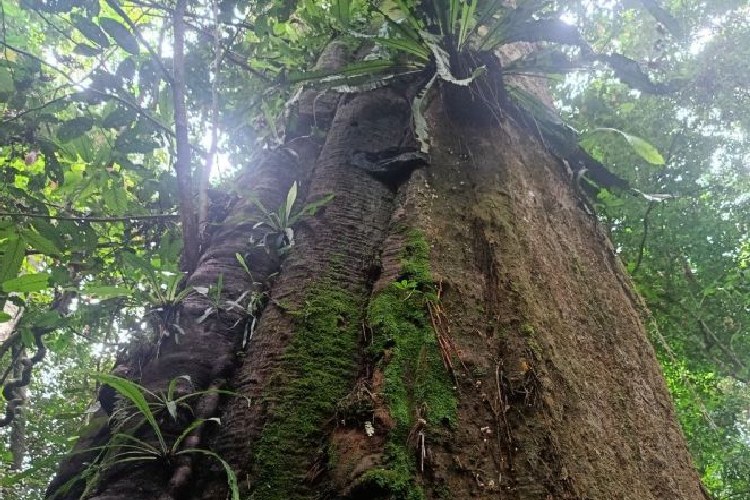TIMES AUSTRALIA, JAKARTA – Nestled in the heart of East Kalimantan, Indonesia, Kutai National Park (Taman Nasional Kutai) stands as a powerful reminder of Borneo’s lush natural legacy. Spanning approximately 198,629 hectares, this park is one of Indonesia’s most important conservation areas.
It is home to a vast range of biodiversity, from endangered orangutans to vibrant tropical flora. Among its most awe-inspiring treasures are the ulin trees (Eusideroxylon zwageri), ancient forest giants often referred to as Bornean ironwood.
The Ulin Tree: A Living Relic of Borneo
The ulin tree is a tropical hardwood species native to Borneo and parts of Southeast Asia. Known for being one of the hardest and most durable woods in the world, ulin is highly resistant to termites, rot, and extreme weather.

Because of this, ulin wood has traditionally been used in the construction of bridges, traditional houses, boats, and even railway sleepers. Its strength and longevity have made it a valuable natural resource for centuries.
However, the ulin tree grows very slowly and can take hundreds to over a thousand years to reach full maturity. Mature ulin trees can grow up to 50 meters tall (about 164 feet) and reach massive trunk diameters.
Due to widespread logging and habitat destruction, these trees have become increasingly rare and are now considered vulnerable or endangered in many regions.
In Kutai National Park, especially in the Sangkima area, some of the last giant ulin trees still stand tall. One tree, first measured in 1993 with a diameter of 2.42 meters, had expanded to 2.52 meters by 2023, indicating its age is likely more than a thousand years. Another giant reaches 2.75 meters in diameter, standing as one of the largest ulin trees ever recorded in Indonesia.
A Walk Through Sangkima’s Forest Trails
Exploring the Sangkima section of Kutai National Park is an unforgettable experience. Visitors can embark on trekking routes that stretch around five kilometers, traversing wooden bridges, dense canopies, and the tranquil Sangkima River.
The journey reveals a diverse ecosystem rich with wildlife and ends with the awe-inspiring sight of the ancient ulin trees—silent, towering witnesses to centuries of forest life.
Mewahn, a visitor from Bontang, described his stunning experience exploring the jungle. “Walking into the forest area through wooden trails made from ulin wood for several kilometers was such an enjoyable experience," he said through TripAdvisors.
Conservation in Action
Since its establishment in 1982, Kutai National Park has faced numerous environmental threats, including illegal logging, mining encroachment, and habitat fragmentation.
However, active conservation efforts have been implemented, especially to protect rare species like the orangutan and the ulin tree. The park is also involved in environmental education and eco-tourism projects that aim to foster community involvement and sustainable development.
The ancient ulin trees of Kutai are more than just part of the forest—they are part of Indonesia’s natural and cultural heritage. Their preservation is vital not only for ecological stability but also as a legacy for future generations.
As visitors walk among these giant ulin trees of Kutai National Park, they are reminded of nature’s power, patience, and the importance of sustainable tourism in protecting Earth’s last remaining ancient forests. (*)
Artikel ini sebelumnya sudah tayang di TIMES Indonesia dengan judul: Kutai National Park and Its Timeless Giants: The Ulin Trees of East Kalimantan
| Writer | : Khodijah Siti |
| Editor | : Khodijah Siti |

























